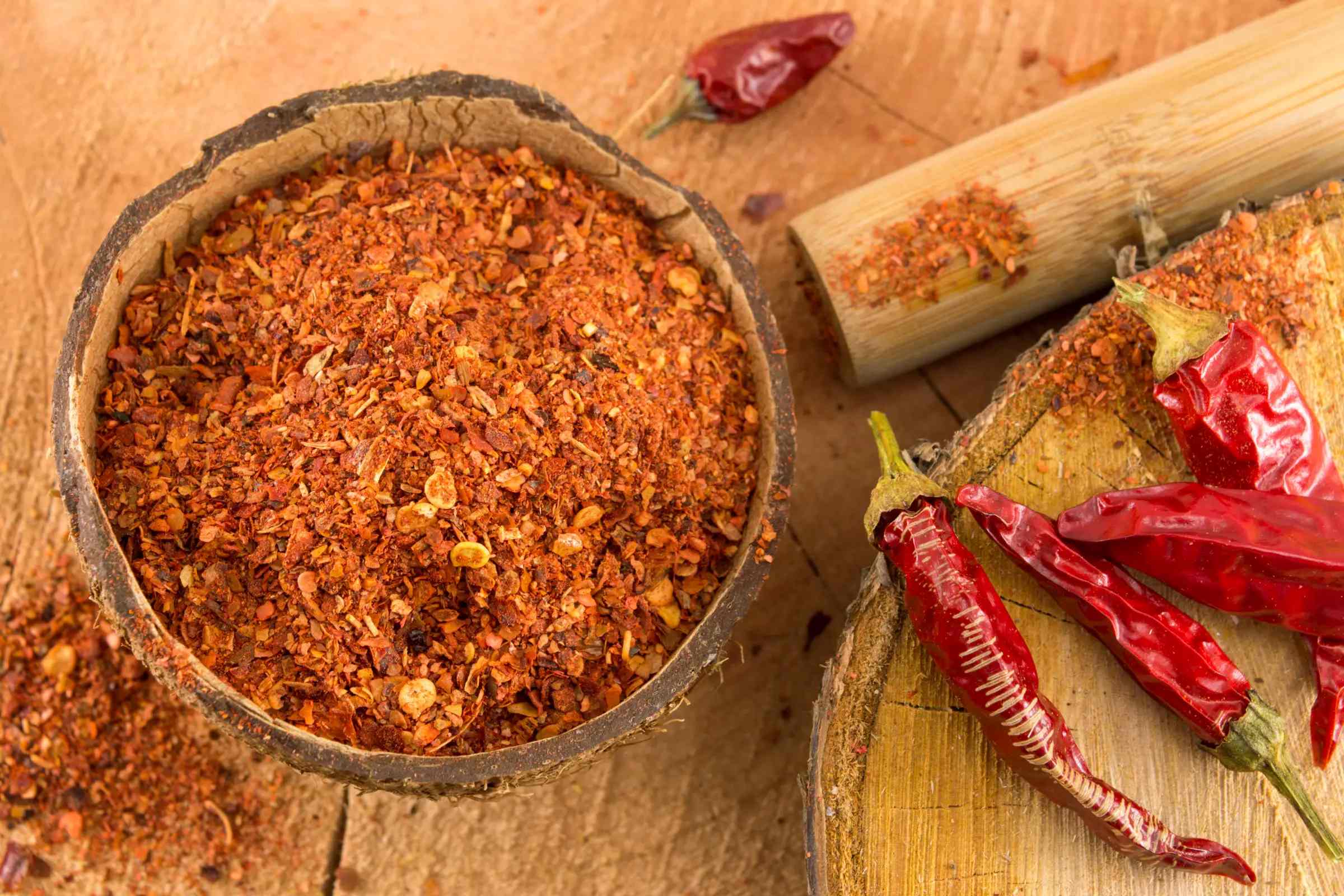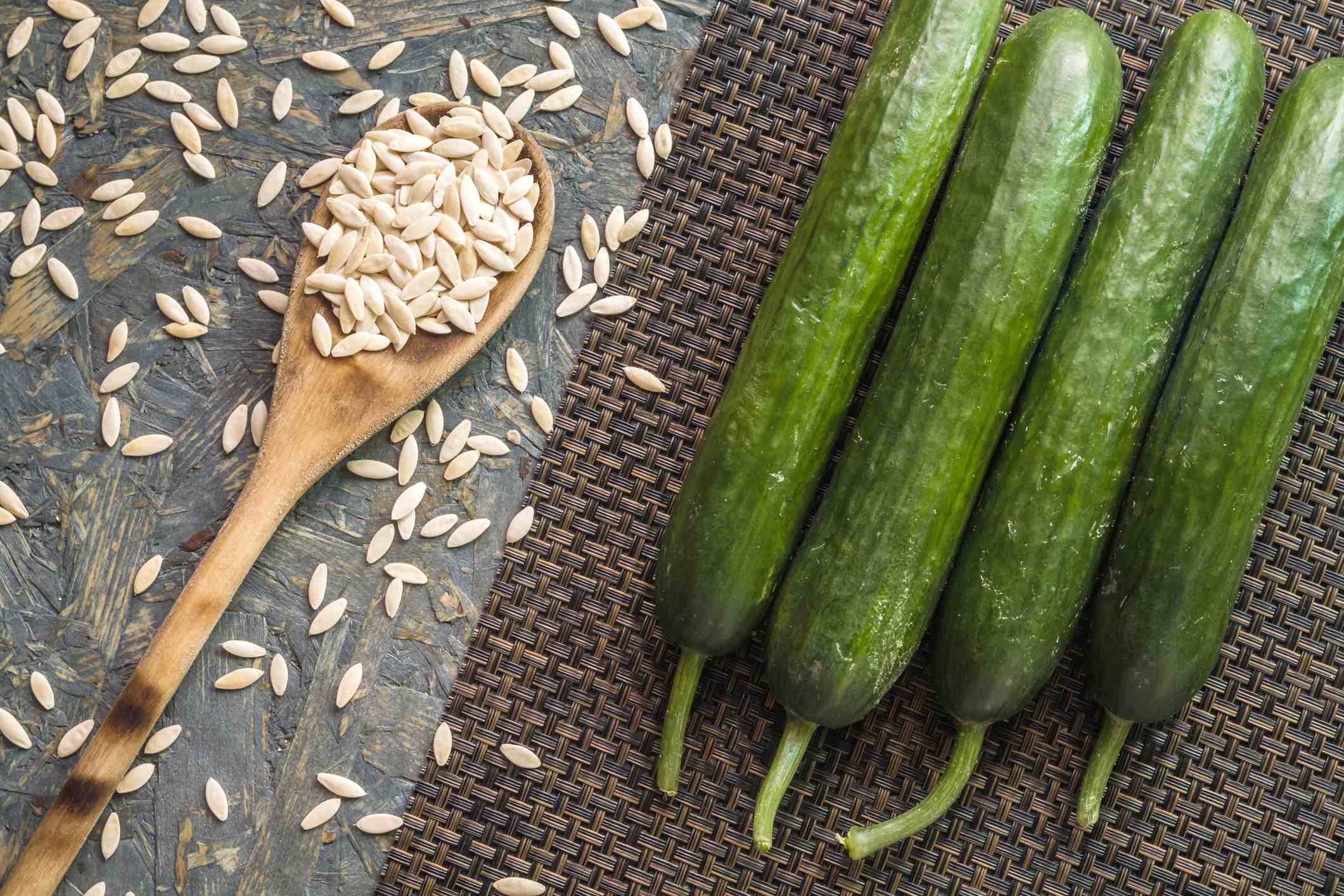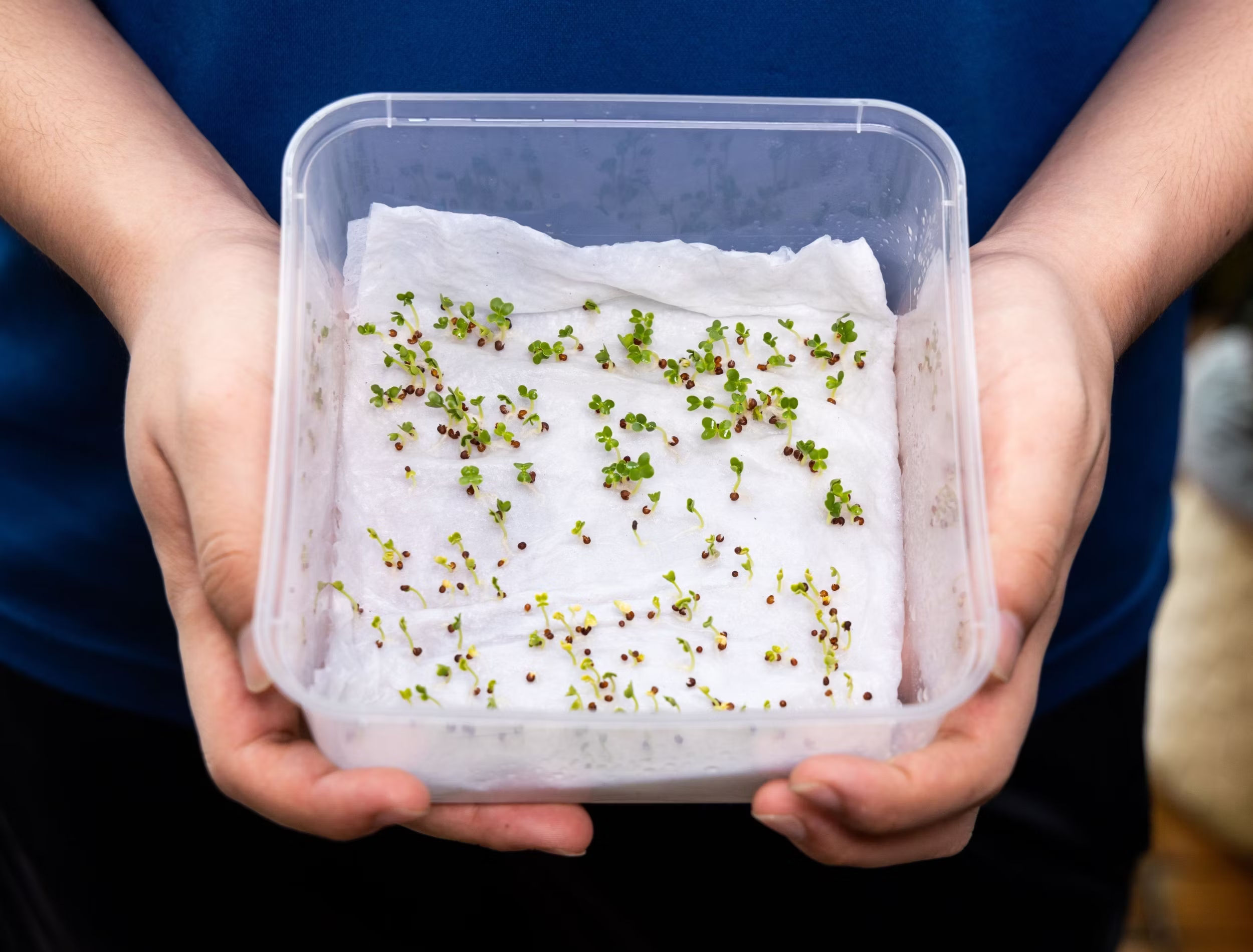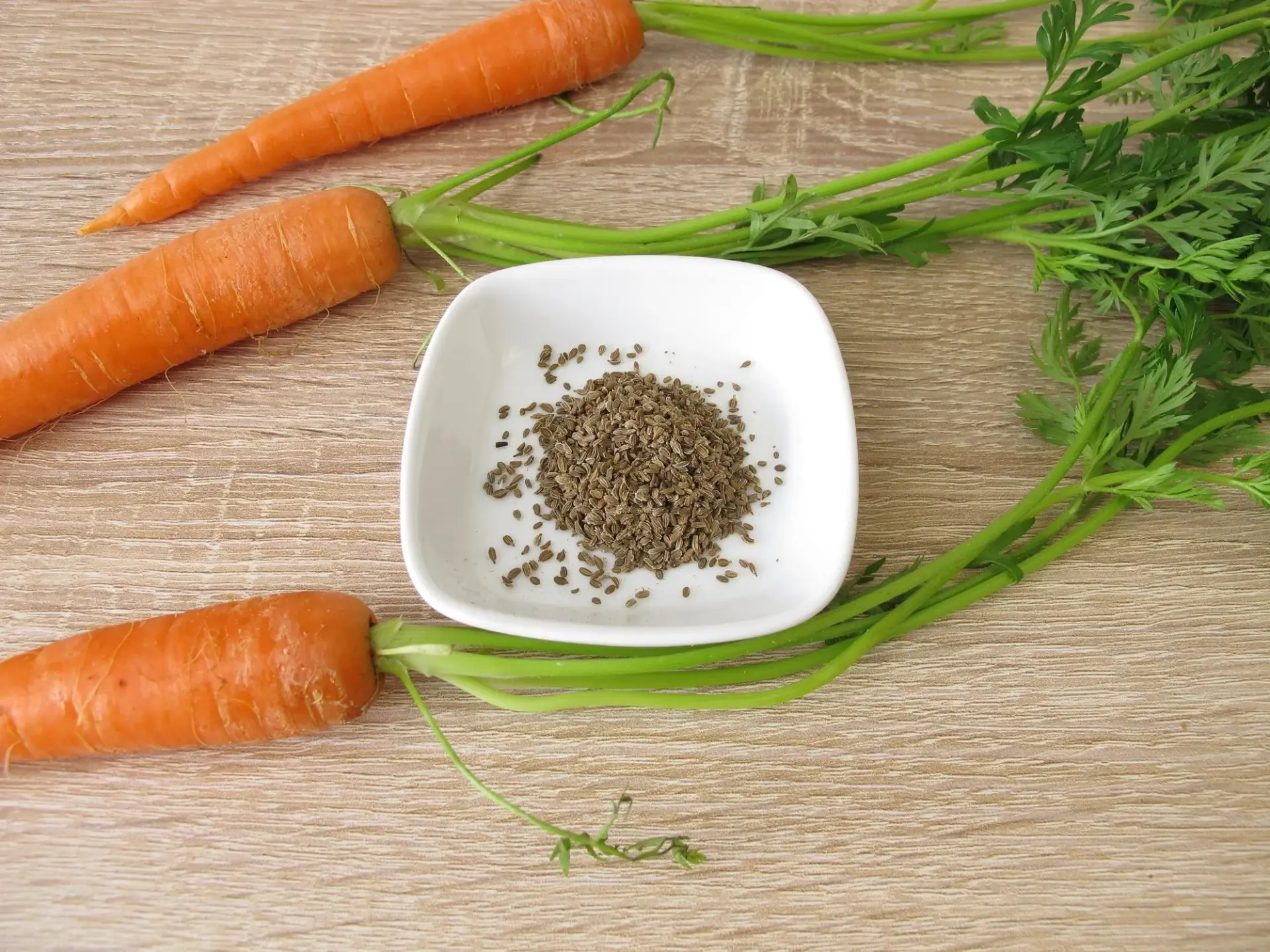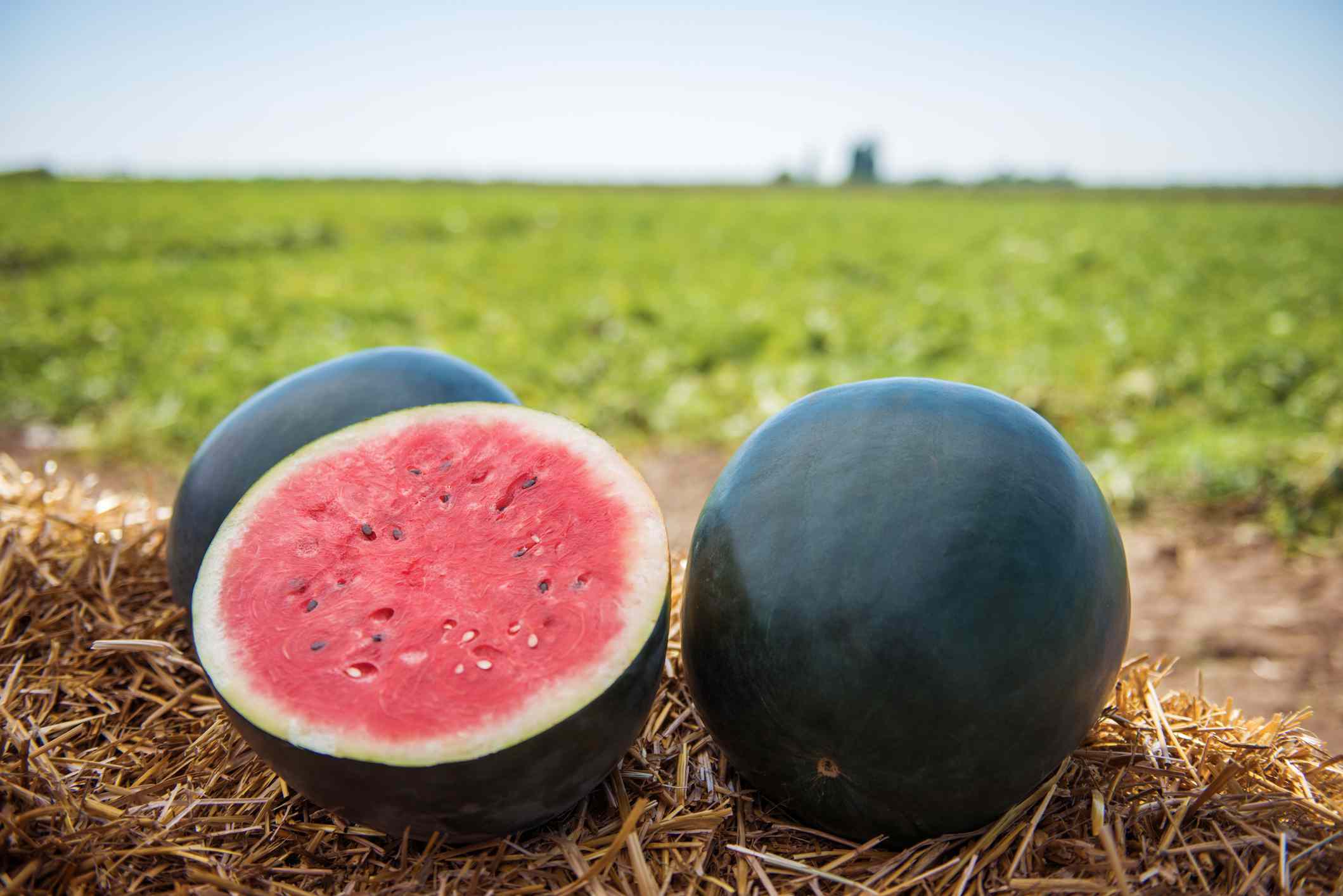Home>Types of Gardening>Edible Gardening>How To Germinate Jalapeno Seeds


Edible Gardening
How To Germinate Jalapeno Seeds
Modified: January 22, 2024
Learn how to successfully germinate jalapeno seeds and start your own edible garden with our expert tips and techniques.
(Many of the links in this article redirect to a specific reviewed product. Your purchase of these products through affiliate links helps to generate commission for Chicagolandgardening.com, at no extra cost. Learn more)
Table of Contents
Introduction
Welcome to the wonderful world of edible gardening! If you have a passion for fresh, homegrown produce, then growing your own edible plants is a great option. Not only does it provide you with a bountiful harvest of nutritious and delicious food, but it also allows you to connect with nature and experience the satisfaction of nurturing plants from seed to table.
One popular choice for any home gardener is growing jalapeno peppers. These spicy and flavorful peppers are a staple in many cuisines and can be used in a variety of dishes, ranging from salsas to stir-fries. The best part is that jalapeno peppers can easily be grown from seeds, making them an ideal addition to your edible garden.
In this article, we will guide you through the process of germinating jalapeno seeds. Germination is the first step in growing any plant from seeds, and getting it right is crucial for ensuring healthy and robust seedlings. We will provide you with step-by-step instructions and valuable tips to help you achieve successful germination and eventually enjoy a bountiful harvest of jalapeno peppers.
Before we dive into the details, it’s important to note that germinating jalapeno seeds requires patience, attention to detail, and the right environmental conditions. But fear not! With a little knowledge and effort, you’ll be well on your way to growing your very own jalapeno plants and enjoying the fruits (or rather, peppers) of your labor.
Step 1: Selecting the Jalapeno Seeds
The first step in the germination process is to select high-quality jalapeno seeds. When choosing seeds, it’s essential to consider their freshness and viability. Look for seeds that are plump, firm, and free from any signs of mold or damage. Seeds that feel lightweight or are discolored are likely old and may have a lower chance of germination.
If you have access to mature jalapeno peppers, you can save the seeds from them. Simply cut open the peppers and scrape out the seeds. Rinse the seeds under running water to remove any pulp or residue, then spread them out on a paper towel to dry. Once dry, store the seeds in a cool, dry place until you’re ready to germinate them.
If you don’t have access to mature jalapeno peppers, you can purchase seeds from a reputable nursery or online seed supplier. Look for certified organic or non-GMO seeds to ensure that you’re starting with the best quality seeds.
It’s also worth considering the variety of jalapeno seeds you want to grow. Jalapeno peppers come in different heat levels and sizes, so choose a variety that suits your taste preferences and growing conditions. Some popular jalapeno varieties include Early Jalapeno, Tam Jalapeno, and Mucho Nacho.
Once you have selected your jalapeno seeds, it’s crucial to store them properly to maintain their viability. Keep them in a cool, dry place away from direct sunlight. Consider using airtight containers or resealable bags to protect them from moisture and pests. Label the containers with the seed variety and the date of purchase or collection to ensure accurate tracking.
Remember, selecting high-quality jalapeno seeds is the foundation for successful germination. Take your time to choose the best seeds possible, and you’ll increase your chances of a thriving and productive jalapeno pepper garden.
Step 2: Preparing the Germination Medium
In order to provide the ideal conditions for jalapeno seeds to germinate, it’s important to prepare a suitable germination medium. The germination medium acts as a supportive environment for the seeds, providing them with the necessary moisture, oxygen, and nutrients to sprout and grow.
A popular germination medium for jalapeno seeds is a mixture of peat moss and vermiculite or perlite. This combination creates a lightweight and well-draining substrate that allows for proper moisture retention while preventing waterlogging. Alternatively, you can use a high-quality seed starting mix that is specifically formulated for germinating seeds.
Before preparing the germination medium, moisten it with water until it is evenly damp but not overly wet. Excess water can lead to rotting of the seeds and fungal growth. Using a clean container, fill it with the moistened germination medium, leaving about half an inch of space at the top for ease of handling.
Gently tamp down the germination medium to create a smooth and even surface. Avoid compacting it too tightly, as this can hinder seedling emergence. The goal is to provide a loose and airy substrate that allows the seeds to establish root systems easily.
Once the germination medium is prepared, it’s a good idea to sterilize it to eliminate any potential pathogens that could harm the seeds. You can do this by heating the medium in an oven at 180°F (82°C) for about 30 minutes. Allow the medium to cool completely before proceeding.
It’s worth mentioning that some gardeners prefer to use biodegradable seed starting pots or trays instead of directly sowing the seeds into the germination medium. This allows for easier transplanting of the seedlings without disturbing their delicate root systems.
Remember, preparing the right germination medium is crucial for the success of germinating jalapeno seeds. By providing a well-draining substrate with the right moisture levels, you are creating an optimal environment for the seeds to sprout and grow into healthy seedlings.
Step 3: Soaking the Jalapeno Seeds
Soaking the jalapeno seeds before planting can help expedite the germination process by softening the seed coat and encouraging quicker sprouting. While not all seeds require soaking, jalapeno seeds can benefit from this step, especially if their outer shells are tough or have a thick coating.
To begin, fill a small cup or container with lukewarm water. The water should be at room temperature or slightly warmer to provide an ideal soaking environment for the seeds. Avoid using hot water, as excessive heat can damage the seeds.
Next, carefully place the jalapeno seeds into the water, ensuring they are fully submerged. It’s essential to use a container that is deep enough to allow the seeds to soak without overflowing. You can soak multiple seeds at once, as long as they have enough room to absorb moisture.
Allow the jalapeno seeds to soak in the water for about 8-12 hours or overnight. This timeframe gives the seeds ample time to absorb water and soften their outer shells. Soaking for too long can potentially drown the seeds or lead to bacterial or fungal growth, so be mindful of the soaking duration.
After the soaking period, carefully drain the water from the container. You can use a fine-mesh sieve or colander to catch the seeds and remove any excess water. Avoid rinsing the seeds, as this can wash away the moisture they have absorbed.
Now that your jalapeno seeds have been soaked, they are ready to be planted into the germination medium. Remember to handle them with care to avoid any damage to the softened seed coat.
Soaking seeds can help jumpstart their germination process, allowing for quicker and more uniform sprouting. By providing optimal moisture levels and softening the seed coat, you’re giving your jalapeno seeds a head start towards becoming healthy and vibrant seedlings.
Step 4: Planting the Soaked Seeds
Now that your jalapeno seeds have been soaked and are ready for planting, it’s time to transfer them into the germination medium. Proper planting techniques are essential for ensuring successful seedling emergence and growth.
Using a clean pair of tweezers or your fingers, carefully remove the soaked jalapeno seeds from the container. Handle the seeds gently to avoid any damage to the softened seed coat. If you’re using biodegradable seed starting pots or trays, make small indentations in the germination medium to accommodate each seed.
Place one seed in each indentation, ensuring they are spaced apart to allow room for growth. If you’re directly sowing the seeds into the germination medium, make shallow holes using the tip of a pencil or your finger, approximately ¼ to ½ inch deep. Place one seed in each hole.
Once the seeds are in place, lightly cover them with a thin layer of the germination medium. The layer should be just enough to gently cover the seeds without burying them too deep. This layer helps retain moisture around the seeds and provides some protection during the germination process.
After planting, lightly mist the germination medium with water to ensure it is evenly moist. Avoid overwatering, as excess moisture can lead to rotting of the seeds. Place a clear plastic dome or cover over the planting area to create a mini-greenhouse effect. This helps maintain humidity and warmth, promoting optimal conditions for germination.
Now, it’s important to find a suitable location for the planted seeds. Choose a warm spot with indirect sunlight, such as a windowsill or a greenhouse. Jalapeno seeds require temperatures around 75-85°F (24-29°C) to germinate successfully. You can use a seed heating mat to help maintain consistent warmth if needed.
Remember to label your planting containers or trays with the seed variety and the date of planting. This will help you keep track of the germination progress and ensure proper care throughout the process.
By planting the soaked jalapeno seeds in a gentle and precise manner, you’re giving them the best opportunity to sprout and develop into healthy seedlings. With the right planting technique and optimal environmental conditions, you’ll soon see signs of life emerging from the seeds.
Step 5: Providing the Right Environment
Creating the right environment is crucial for the successful germination of jalapeno seeds. By ensuring optimal conditions, you can promote healthy seedling growth and increase the chances of a successful harvest.
Temperature is a key factor in providing the right environment for germination. Jalapeno seeds prefer warm temperatures between 75-85°F (24-29°C). It’s important to maintain consistent warmth throughout the germination process. You can use a seedling heat mat or place the planting containers in a warm area, such as near a heater or in a temperature-controlled greenhouse.
Lighting is another important aspect of the germination environment. While jalapeno seeds don’t require intense light at this stage, providing them with bright, indirect light will help stimulate growth. Place the planting containers in a well-lit area, such as a windowsill or under fluorescent grow lights. Avoid placing them in direct sunlight, as this can cause overheating and may result in drying out the germination medium.
Moisture is crucial for successful germination. While you want to keep the germination medium consistently moist, it’s important to avoid overwatering, as this can lead to rotting of the seeds. Monitor the moisture levels regularly and adjust watering accordingly. Use a spray bottle or misting wand to water the seeds gently. Alternatively, you can place the planting containers on a tray filled with water and allow the germination medium to absorb the moisture from the bottom.
In addition to maintaining proper moisture levels, it’s essential to provide adequate airflow to prevent the growth of mold or fungi. This can be achieved by occasionally removing the plastic dome or cover that was placed over the planting containers. Allow some air circulation for a few hours each day, ensuring the germination medium doesn’t dry out completely in the process.
Lastly, be patient! Germination can take anywhere from 7 to 14 days or longer, depending on the temperature and seed quality. During this time, continue to monitor the environment and make necessary adjustments to ensure the seeds have the best chance of success.
By providing the right environment for germination—consistent warmth, indirect lighting, proper moisture levels, and adequate airflow—you are giving your jalapeno seeds the best chance to sprout and thrive. Pay attention to the needs of the seeds and make adjustments as necessary to create an optimal germination environment.
Step 6: Monitoring and Care During Germination
Monitoring and providing proper care during the germination process is essential to ensure the healthy development of your jalapeno seedlings. By keeping a close eye on their progress and addressing any issues promptly, you can maximize their growth potential.
One of the key aspects to monitor is the moisture level of the germination medium. Check the moisture regularly by gently pressing your finger into the soil. If it feels dry to the touch, it’s time to water. Use a spray bottle or misting wand to provide a fine mist of water over the germination medium. Avoid overwatering, as excessive moisture can lead to damping-off, a fungal disease that can kill the seedlings.
Another important aspect to monitor is the temperature. Ensure that the germination environment remains within the optimal temperature range for jalapeno seeds, between 75-85°F (24-29°C). Use a thermometer to regularly check the temperature, especially if you are using a seedling heat mat or a temperature-controlled greenhouse. Adjust the heat source or placement of the planting containers as needed to maintain the proper temperature.
Keep an eye out for any signs of growth. As the jalapeno seeds germinate, you should start to see small sprouts emerging from the soil. Once the seedlings have emerged, remove the plastic dome or cover to allow for better airflow. Continue to provide bright, indirect light, as well as maintaining the appropriate temperature and moisture levels.
As the seedlings grow, you may need to thin them out if they are overcrowded. This involves carefully removing weaker or less vigorous seedlings, allowing more space for the stronger ones to grow. Thinning helps avoid competition for resources and promotes healthier growth of the remaining seedlings.
Fertilization is not necessary during the germination stage, as the seeds contain enough nutrients to support initial growth. However, if you notice slow or weak growth after the seedlings have emerged, you may consider using a diluted, balanced liquid fertilizer. Use it sparingly and follow the manufacturer’s instructions to avoid overfeeding and causing damage to the delicate seedlings.
Regular observation is crucial during the germination process. Watch for any signs of pests, such as aphids or fungal diseases, and take appropriate action if needed. Early intervention can prevent the spread of pests or diseases and help ensure the health of your seedlings.
By actively monitoring and providing proper care throughout the germination process, you are setting the stage for strong and healthy jalapeno seedlings. Pay attention to their moisture levels, temperature, and growth progress, and address any issues promptly to optimize their chances of thriving.
Step 7: Transplanting the Seedlings
Once your jalapeno seedlings have grown strong and developed a few sets of true leaves, they are ready to be transplanted into their permanent home, whether it’s in a garden bed or containers.
Before transplanting, it’s important to harden off the seedlings. This process helps acclimate them to outdoor conditions gradually, preventing shock and stress. Start by placing the seedlings outdoors in a shaded area for a few hours each day, gradually increasing their exposure to sunlight and length of time outdoors over the course of a week or so.
Choose a planting location that receives full sun and has well-drained soil. If you are planting in containers, ensure they have adequate drainage holes to prevent waterlogging. Prepare the planting area by loosening the soil and incorporating organic matter, such as compost or well-rotted manure, to improve fertility and drainage.
Dig holes in the prepared soil or container that are slightly larger than the root ball of each seedling. Gently remove the seedlings from their current containers by holding the base of the stem and carefully easing the roots out. Place each seedling in a hole, making sure the top of the root ball is level with the soil’s surface.
Backfill the holes with soil, gently firming it around the base of the seedlings to provide stability. Water the newly transplanted seedlings thoroughly to promote root establishment and reduce transplant shock. Consider using a diluted liquid fertilizer to provide an extra boost of nutrients to support their growth.
Continue to provide the transplanted seedlings with regular water and monitor their progress closely. Mulching around the plants can help conserve moisture, suppress weed growth, and regulate soil temperature. Apply a layer of organic mulch, such as straw or wood chips, around the base of the seedlings, keeping it a few inches away from the stem.
Protect the seedlings from extreme weather conditions, such as strong winds or frost, by using temporary shelters, such as row covers or cloches. These can help shield the plants until they have become more established in their new location.
Once the jalapeno seedlings have been successfully transplanted, they will continue to grow and develop into mature plants. Provide them with regular care, including regular watering, appropriate fertilization, and pest control measures, to ensure a bountiful harvest of flavorful jalapeno peppers.
Remember, the transplanting stage is a critical step in the journey of your jalapeno plants. By following proper transplanting techniques and providing the necessary care and attention, you are paving the way for healthy, productive plants that will reward you with a plentiful harvest.
Conclusion
Congratulations! You have now learned the seven essential steps to successfully germinate jalapeno seeds and grow them into healthy, productive plants. By selecting high-quality seeds, preparing the germination medium, soaking the seeds, planting them properly, providing the right environment, monitoring and caring for the seedlings during germination, and finally transplanting them, you have set the stage for a successful jalapeno pepper garden.
Throughout the process, remember to be patient and attentive. Germination can take time, and seedlings need proper care and attention to thrive. By providing the right conditions of moisture, warmth, light, and airflow, you can maximize the chances of successful germination and healthy growth.
As your jalapeno seedlings grow into mature plants, continue to provide them with optimal care. Regularly water, fertilize, and protect them from pests and adverse weather conditions. Monitor their progress and adjust your care regimen as needed. With time and dedication, you will soon be rewarded with a bountiful harvest of delicious and spicy jalapeno peppers.
Remember, edible gardening is a journey filled with learning and enjoyment. Each step, from germinating seeds to harvesting the fruits of your labor, is an opportunity to connect with nature and nourish yourself with homegrown goodness. So grab your gardening tools, get your hands dirty, and embark on your edible gardening adventure. Happy growing!
